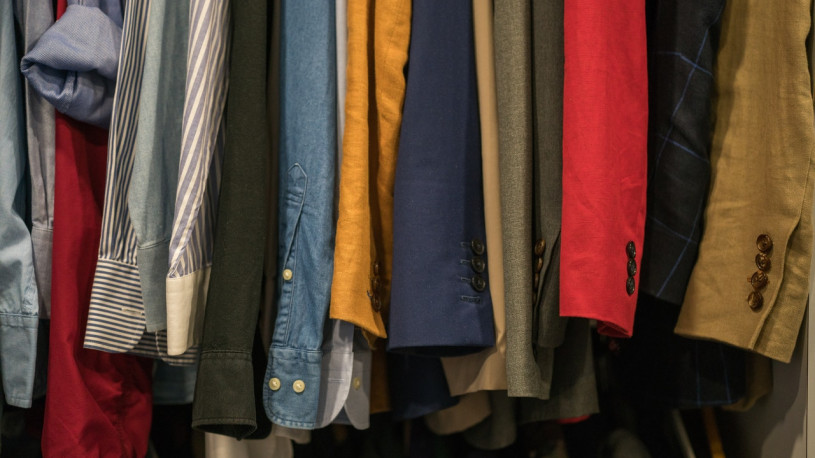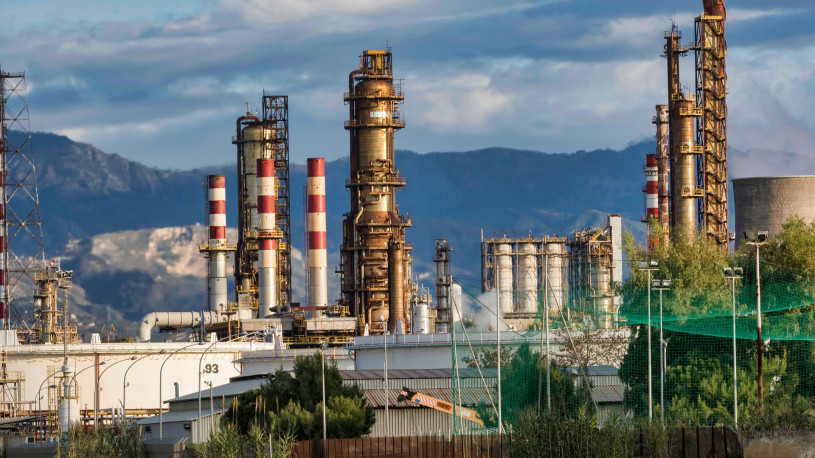-
A New Polyethylene Textile that Keeps you Cool
 Continue Reading
Continue ReadingA new polyethylene fabric has been created that a research team claims can keep a person twice as cool as conventional textiles. Better still, its dynamics are based on low-cost polyethylene layers that have a cotton mesh interwoven between them. This makes it cheap to produce and fashionable to wear.
The breakthrough was made by a research team from Stanford University and is based on the fact that a body cools in two distinct ways; through perspiration (where sweat is free to evaporate through a material, something regular fabrics do), and through infrared radiation (a benign wave of light that all objects emit). Whereas regular clothing traps the infrared emissions close to the body, the polyethylene layer allows these waves to leave making a person ‘nearly 4 degrees Fahrenheit cooler than if they wore cotton clothing’.
Infrared radiation is not a small deal when it comes to keeping us cool, as Shanhui Fan, a professor of electrical engineering who specializes in photonics (the study of visible and invisible light) explained when he said that, “Forty to 60 percent of our body heat is dissipated as infrared radiation when we are sitting in an office. But until now there has been little or no research on designing the thermal radiation characteristics of textiles.”
This is because textiles that do not trap infrared radiation are often transparent, something that the researchers pointed out when publishing their results in the journal Science, as follows;
“The challenge for developing a material that is transparent to IR but opaque to visible light is that the radiation spectrum (7 to 14 μm) overlaps with most of the IR absorption wavelength of common textile materials. As a result, most textile materials strongly absorb human body radiation and have very low IR transparency. [However] Polyolefins such as polyethylene (PE) have narrow absorption peaks centered at the wavelengths of 3.4, 3.5, 6.8, 7.3, and 13.7 μm, which are all far away from the peak of human body radiation. However, one cannot use a normal PE film as textile material because it is visibly transparent [much like kitchen cling film or Saran wrap] and does not have desired properties for textile, such as air permeability and water-wicking [it does not convey liquid via capillary action].”
So the Stanford engineers had a problem, and half a solution. They knew that the problem with clothes in hot weather was that they kept people warm by preventing infrared radiation, but they also knew that simple polyethylene films could not be used for clothing as they limited air-flow, were relatively water-tight and were typically transparent.
As the online journal Science Daily explains, they, “…tackled these deficiencies one at a time. First, they found a variant of polyethylene commonly used in battery making that has a specific nanostructure that is opaque to visible light yet is transparent to infrared radiation, which could let body heat escape. This provided a base material that was opaque to visible light for the sake of modesty but thermally transparent for purposes of energy efficiency. They then modified the industrial polyethylene by treating it with benign chemicals to enable water vapor molecules to evaporate through nanopores in the plastic, allowing the plastic to breathe like a natural fiber.”
By doing this the researchers had, “a single-sheet material that met their three basic criteria for a cooling fabric.”
Finally, to make the new material more like a fabric they wove a cotton mesh between two layers of the polyethylene to create a new textile, which when tested against a piece of cotton of identical thickness the modified fabric kept the body 3.6° F cooler.
You can see more about the development of this new polyethylene textile on the YouTube video here.
The future now looks exciting in finding ways to further develop this new textile. Such that the researchers, “are continuing their work on several fronts, including adding more colors, textures and cloth-like characteristics to their material.”
But they are also keen to keep production costs and chemical raw material prices low, so that the final textiles are economically viable. As Yi Cui, an associate professor of materials science and engineering and of photon science told the Stanford University website, “If you want to make a textile, you have to be able to make huge volumes inexpensively.”
With research that is focused on not only a practical goal in keeping people cool, but is also aware of polymer markets and using readily available polyethylene supplies, then the team is sure to have success in bringing their new plastic fabric to market.
But in more than just clothing, maybe it is possible to develop polyethylene to be treated in a way that makes it useable to cool other objects. For Prof. Fan believes, “that this research opens up new avenues of inquiry to cool or heat things, passively, without the use of outside energy, by tuning polymers or other materials to dissipate or trap infrared radiation.”
And if polymer engineers can master that breakthrough, then polyethylene markets will change forever.
Photo credit: L.A. Cicero
Main Photo credit: Stanford University
-
What Impact will this Electrochromic Plastic Film have on Home and Office Design?
 Continue Reading
Continue ReadingA research team from the Cockrell School of Engineering at The University of Texas has developed a thin electrochromic plastic coating for windows that not only saves on heating and cooling bills, but can also turn opaque or tinted by the flick of a switch.
Whilst industrial chemists have long been able to manufacture coatings that can tint glass with a switch, for many years these films required a constant electrical current. That said, recently a research team from Cambridge University developed a ‘smart glass’ that, according to online journal Popular Mechanics, “can switch back and forth between transparency and opaqueness while…only needing power when making the switch.”
But as the new design from Texas is a thin film that coats the surface (rather than being built into the glass), production costs are significantly reduced and the film is useable on all sorts of surface, such as sunroofs or even curved glass.
The online journal Popular Mechanics outlined the many advantages the discovery has over older methods, stating, “Other types of electrochromic plastic do exist, but are very bulky and require high temperatures to manufacture. This new process produces a thin, flexible material without resorting to high temperatures. The new material is also twice as energy-efficient. The result is a flexible, low-cost plastic sheet that can be applied to any window or any surface, no matter what the shape of the surface is. These sheets can then control the amount of sunlight entering the building, keeping rooms cool in the summer and warm in the winter.”
The online journal Science Daily reports on the chemical structure of the new material, explaining how, “The new electrochromic material, like its high-temperature processed counterpart, has an amorphous structure, meaning the atoms lack any long-range organization as would be found in a crystal. However, the new process yields a unique local arrangement of the atoms in a linear, chain-like structure. Whereas conventional amorphous materials produced at high temperature have a denser three-dimensionally bonded structure, the researchers’ new linearly structured material, made of chemically condensed niobium oxide, allows ions to flow in and out more freely. As a result, it is twice as energy efficient as the conventionally processed smart window material.”
Delia Milliron, an associate professor in the McKetta Department of Chemical Engineering, explained how her team was able to make the discovery, stating that, “There’s relatively little insight into amorphous materials and how their properties are impacted by local structure. But, we were able to characterize with enough specificity what the local arrangement of the atoms is, so that it sheds light on the differences in properties in a rational way.”
The research was published in the journal Nature Materials, where they, “report on a room-temperature solution process to fabricate electrochromic films of niobium oxide glass (NbOx) and ‘nanocrystal-in-glass’ composites (that is, tin-doped indium oxide (ITO) nanocrystals embedded in NbOx glass) via acid-catalysed condensation of polyniobate clusters.”
Coating manufacturers, architects and plastics producers are showing a lot of interest over this project due to the triple advantage of its lower production cost, stylish yet practical application and cost saving impact on fuel bills. Others have already highlighted how the coating could be turned on or off via a timer or other automatic switch, say for a time of day when sunlight hits a part of the building or to turn a window opaque at sunset.
Meanwhile the researchers are continuing their work, hoping to use their understanding of amorphous materials to refine this and other film coatings. As Milliron says, “We want to see if we can marry the best performance with this new low-temperature processing strategy.”
For more news on this and other chemical industry based projects join the Spotchemi LinkedIn group via this link.
Photo credit: Cockrell School of Engineering
-
The Chemical Industry 2016; The Story So Far
 Continue Reading
Continue ReadingFor many in the industrial chemical industry, 2016 has been a difficult year due to a number of challenges, as energy prices, regional economic slumps and investment uncertainty all taking their toll. But despite these downsides, there is still much for chemical traders to be optimistic about.
As Zacks Equity Research states in a recent report, “the chemical industry is expected to continue to recuperate through the balance of 2016, supported by continued strength in the light vehicles market, positive trends in the construction space and significant shale-linked capital investment.”
This prediction is all the more surprising given the depressed condition the industry was in following the 2009 recession, which hit chemical manufacturing very hard. Today, the mood among chemical producers is much more positive, with strong growth in construction and automobile markets giving a healthy boost to demand.
That said, chemical suppliers are still looking to lower costs, as Zacks reports, “Chemical companies are increasingly looking for cost synergy opportunities and enhanced operational scale through consolidations amid nagging macroeconomic challenges. Strategic measures including cost management and productivity improvement also remain the prime focus of these companies to stay afloat in a still-difficult global economic backdrop.”
Much of the chemical industry uncertainty revolves around reduced demand and lower growth in the Chinese economy. As Yahoo Finance stated in a report on the Chemical Industry Outlook that, “Lingering weakness in China – a key market for chemicals – is expected to remain a major drag on the chemical industry in the short haul. A persistent credit crunch, overcapacity and weak infrastructure and manufacturing investment are hurting the world’s second-largest economy.” The report also adds that, “the outlook for the fertilizer and agricultural chemicals space remains cloudy due to sluggish economic conditions in certain developing markets, particularly Brazil.”
Conversely, the U.S. chemical industry is in a good position for growth despite the fact that the dollar is relatively strong and oil prices are remaining much lower than in previous years. These two factors aside, the American Chemistry Council (ACC) predicts that, “U.S. chemical production will rise 1.6% in 2016 and 3.7% in 2017. Barring production of the pharmaceuticals segment, output is expected to go up 2.7% this year and 4.1% in 2017. [Meanwhile] basic chemicals production [is expected] to expand 3.1% in 2016 and 4.9% in 2017.
Much of this growth is through new capital investment that has added capacity and a feedstock cost advantage driven by the supply of natural shale gas. As the ACC reports, “The shale gas bounty and ample supply of natural gas liquids has been a huge driving force behind chemical investment on plants and equipment in the U.S. and have provided domestic petrochemicals producers a compelling cost advantage over their global counterparts.” U.S. chemical industry growth is further aided as the ACC, “expects domestic chemical industry capital spending to increase 10.4% in 2016 and 7.8% in 2017.”
The situation for the European chemicals industry is far more uncertain, as the general economy remains stuck in the doldrums, with Eurostat reporting, “paltry growth of 0.3% in the second quarter of 2016”. This low growth will likely continue into 2017 as a result of a pessimistic economic outlook and political uncertainty following Brexit.
European manufacturers are also struggling with prices driven lower by foreign imports, relatively higher energy and feedstock costs and the challenge of changing regulations caused by the introduction of REACH. All this has resulted in the European Chemical Industry Council (CEFIC), calculating that, “chemical output in the European Union contracted 0.7% year over year in the first four months of 2016 with chemical prices falling 3.8% for the period. [Whilst] Chemical production in the region rose just 0.6% last year.” Furthermore, “CEFIC expects a modest growth of roughly 1% in chemical output in both 2016 and 2017.”
Like all global industries, world chemical markets are experiencing great turbulence, with positive and negative factors influencing each region differently. Overall however, the chemicals industry is in rude health, with demand in key sectors fuelling manufacturing growth which in turn is having a positive impact on the chemicals industry.
As the Zacks’ report states, “The chemical industry faces certain roadblocks including a still weak agriculture market, depressed demand in the energy space, slowdown in China and a choppy Europe. Nevertheless, continued strong momentum in the automotive space and an upswing in the construction markets bodes well for the chemical industry.”
Photo credit: Vivian Dsena

